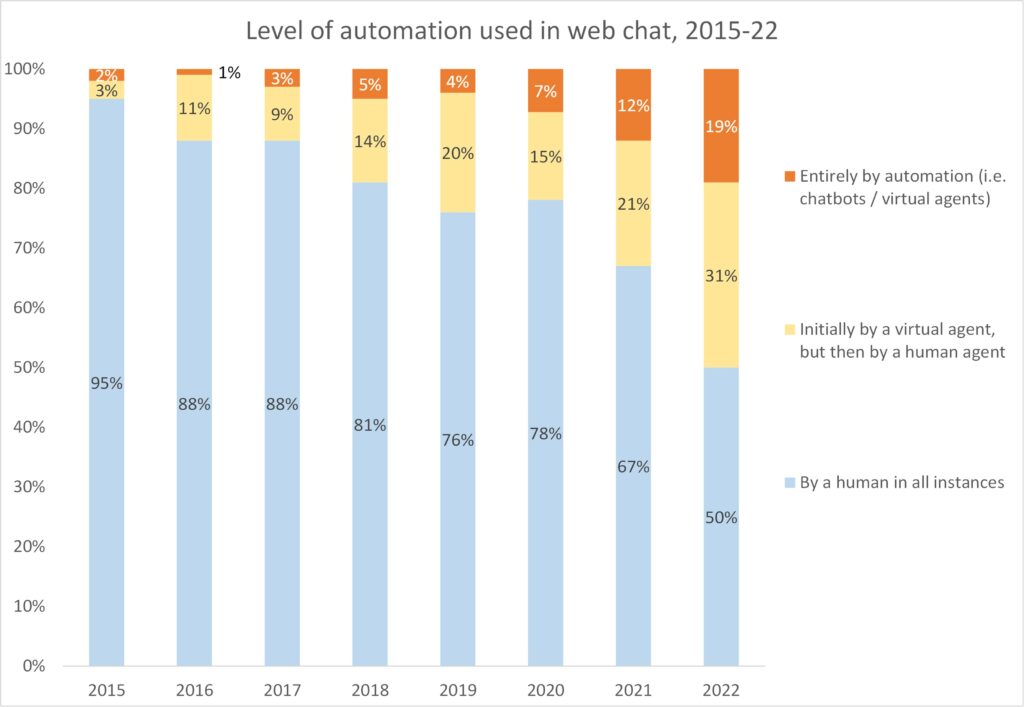The rise of automated web chat and conversational AI in UK contact centres – and the attendant cost benefits
Most people who have ever reached out to a contact centre in the UK will be highly familiar with web chat as a customer service channel.
Web chat sessions – also sometimes referred to as ‘instant messaging’, or IM – offer a live or automated assistance option to those who may be browsing a given organisation’s website.
Although – like email – web chat has existed for many years, only in relatively recent times has it begun to grow volumes to the extent of becoming a mainstream channel for interactions between businesses and their customers, especially in vertical markets such as retail.
So, why have so many organisations embraced web chat?
The sheer familiarity of the format of web chat to so many of today’s customers is one boon as far as organisations are concerned, but so – inevitably – is cost.
One of the key ways in which web chat helps to reduce such costs, is by enabling more than one chat session to take place with customers at the same time for each agent. The time that a customer spends reading and responding to the agent’s latest message allows the agent to deal with other customers concurrently.
Although some providers of web chat solutions have said that agents can deal with four or more web chat sessions at a time, it is an open question whether this represents a sustainable model for the agent, or provides the customer with a sufficiently high quality of service.
Having said that, the merits of web chat for contact centres are clear. This channel generally works well for customers in terms of giving them an immediate response, while the fact that multiple concurrent chat sessions can take place for each agent helps to make it a potentially lower-cost channel than voice for businesses.
Indeed, recent UK contact centre research has indicated that the mean average cost of a web chat (£3.19) is lower than that of a phone call (£6.26) or even an email (£3.68). Bearing in mind that around half of web chat work is still not automated, this would seem to offer a lot of long-term promise for contact centres anxious to reduce their costs.
Web chat might also be seeing increasing use for more complex work
Until recently, web chat was mainly carried out by human agents, with very limited use of automation.
However. while only 5% of web chats in 2015 had any automation involved, this percentage had grown to 50% by 2022. Such automation has mostly taken the form of automated chatbots initially handling the customer’s query, before handing off to live agents when appropriate; however, there has also been a very significant increase in recent years in the use of fully automated AI-enabled web chat (also known as virtual agents or conversational AI).

It seems that web chat is now being used for more complicated queries. For years, the subjects of web chats have often been simpler than queries made via telephone, although there is some evidence of this changing. It has been found that nearly one quarter of web chats, for example, take longer than 10 minutes to complete, as opposed to only 9% of phone calls.
Would you be interested in learning more about the latest UK contact centre research, including in relation to the use of web chat and conversational AI? If so, you may be interested in downloading the “Inner Circle Guide to AI, Chatbots & Machine Learning”, which draws upon surveys conducted with hundreds of organisations in the UK.

